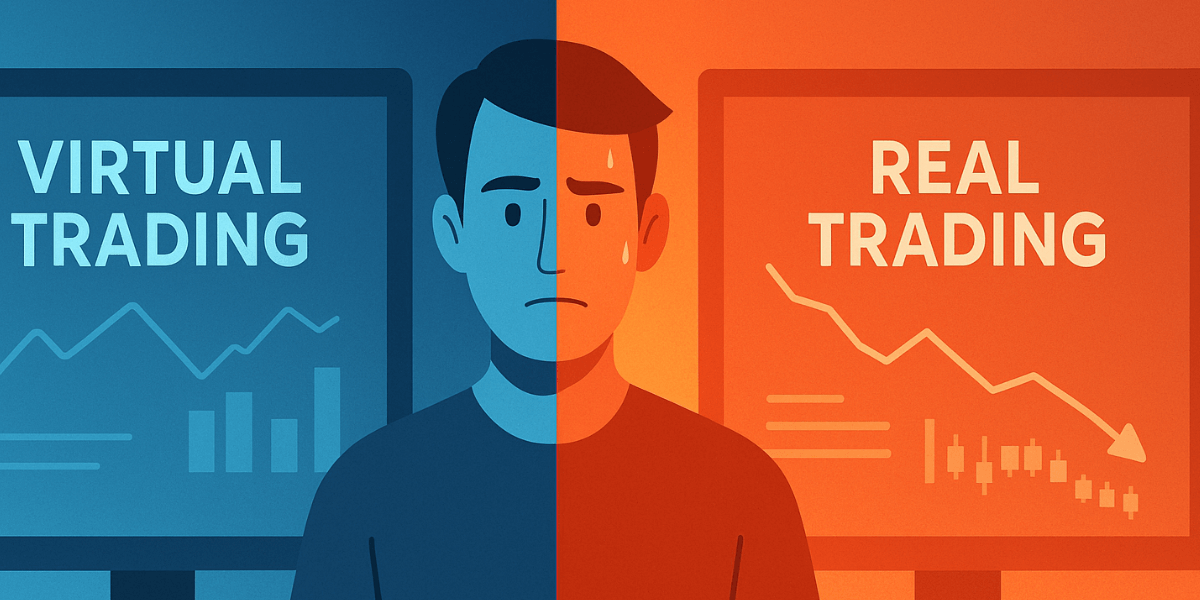Macroeconomic news is the primary driver behind the foreign exchange markets. Currency prices constantly shift, sometimes influenced by the money supply, such as central bank interest rates, and sometimes by demand, such as retail sales or employment.
These news reports typically come out monthly and spread across the calendar to dampen the unavoidable volatility effect. Serious forex traders methodically track these events as they can “make or break” their existing trades or trigger the factors setting up their next trades. These price points represent the cornerstone of fundamental analysis, and we’ll explore their intricacies in this article.
Fundamental Analysis and Forex Trading
Fundamental analysis in Forex involves evaluating a country's economic performance to determine the strength of its currency. Unlike technical analysis, which focuses on price charts and patterns, fundamental analysis looks at the underlying economic factors that drive currency movements.
Traders who use fundamental analysis pay close attention to macroeconomic indicators, central bank policies, and geopolitical events to forecast currency trends. Although they typically operate on a larger time frame, often those predictions are valuable for gauging the short-term direction also.
Why Is Data Important? Making Sense of Central Bank Mandates
Understanding central bank mandates is essential for grasping how different economies steer monetary policy. While all central banks influence their nation’s economic health, their priorities aren’t always the same.
- Federal Reserve (United States): The mandate has three main goals—achieving maximum employment, maintaining stable prices, and ensuring moderate long-term interest rates.
- European Central Bank (ECB): Focuses solely on maintaining price stability across the eurozone, making inflation control its chief concern.
- Bank of Canada (BoC): Dedicated to both economic and financial welfare, with a strong commitment to a 2% inflation target as the anchor for its monetary policy.
- Bank of England (BoE): Strives to maintain overall financial system resilience while keeping inflation low and steady.
- Reserve Bank of Australia (RBA): Aims for a stable currency, full employment, and the broad economic well-being of Australians.
- Bank of Japan (BoJ): Prioritizes keeping prices stable, with inflation targeting central to its framework.
- Reserve Bank of New Zealand (RBNZ): Balances price stability with promoting maximum sustainable employment.
These differences in mandates influence how each central bank reacts to economic events and sets policy, which can significantly affect currency valuation and trader expectations.
Correlation Between Macroeconomic Indicators and Currency Movements
Macroeconomic indicators such as GDP, inflation, and employment data are closely linked to currency values. A robust GDP growth often signals a strong economy, leading to a rise in currency value, while high inflation can erode purchasing power and lead to currency depreciation.
Staying Updated on Economic Events
Economic calendars provide schedules of key reports, helping traders anticipate market volatility. By staying updated, traders can adjust their strategies in response to new information, avoiding unexpected losses and capitalizing on market opportunities.
Key Macroeconomic Indicators for Forex Traders
We can group the key macroeconomic indicators into those that show economic growth, employment, inflation, monetary policy, balance of payments, and other trade data.
Economic Growth
- Gross Domestic Product (GDP): GDP measures the total value of goods and services produced within a country over a specific period. It reflects the size and health of an economy. A growing GDP indicates economic expansion, which typically strengthens the national currency. Meanwhile, declining GDP may signal economic trouble, leading to a weaker currency.
- Gross National Product (GNP): While similar to GDP, GNP includes the value of goods and services produced by a country's residents, whether domestically or abroad. GNP provides a broader view of economic performance, especially for countries with significant international business activities.
- Retail Sales: Retail sales track consumer spending on goods and services, a key driver of economic growth. Rising retail sales suggest a healthy economy and can lead to currency appreciation, while declining sales may indicate an economic slowdown.
- Industrial Production: This indicator measures the output of factories, mines, and utilities. It reflects the level of industrial activity and is a leading indicator of economic health. An increase in industrial production usually signals economic strength, boosting the currency.
Employment
- Unemployment Rate: The unemployment rate measures the percentage of the labor force that is unemployed and actively seeking work. A low unemployment rate indicates a strong labor market and economy, which can lead to currency appreciation. A high unemployment rate may signal economic weakness and depress the currency.
- Non-Farm Payrolls (NFP): The NFP report is one of the most closely watched indicators in the Forex market. It shows the number of jobs added or lost in the U.S. economy, excluding the farming sector. A strong NFP report indicates economic growth and typically leads to a stronger U.S. dollar.
- Average Hourly Earnings: This indicator measures the average income earned per hour by workers. Rising wages suggest increased consumer spending power, which can drive economic growth and currency appreciation.
Inflation
- Consumer Price Index (CPI): CPI measures changes in the price level of a basket of consumer goods and services. It is a key indicator of inflation. High inflation can erode purchasing power and lead to currency depreciation, while low inflation is generally favorable for currency strength.
- Producer Price Index (PPI): PPI tracks changes in the prices producers receive for their goods. It is an early indicator of inflation at the consumer level. Rising PPI can signal future increases in CPI, impacting currency values.
- Core Inflation: Core inflation excludes volatile items like food and energy prices, providing a clearer view of long-term inflation trends. Central banks often focus on core inflation when setting monetary policy, making it a critical indicator for Forex traders.
Interest Rates
- Monetary Policy Decisions: Central banks set interest rates to control inflation and stabilize the economy. Higher interest rates attract foreign investment, leading to currency appreciation. Meanwhile, lower rates can lead to currency depreciation as investors look for other returns, and financial institutions issue more money due to lower base borrowing costs.
- Interest Rate Differentials: The difference in interest rates between two countries can drive currency movements. Traders often engage in carry trades, borrowing in a currency with a low interest rate and investing in one with a higher rate, profiting from the interest rate differential. The most famous global interest rate differential between stable economies is between the United States and Japan.
- Yield Curves: The yield curve represents the relationship between interest rates and the maturity of debt securities. An upward-sloping yield curve suggests economic growth and can strengthen the currency, while an inverted yield curve may indicate a recession and lead to currency depreciation.
Balance of Payments
- Current Account Balance: The current account measures a country's trade balance, net income from abroad, and net current transfers. A surplus indicates more exports than imports, which can strengthen the currency. A deficit, on the other hand, may weaken the currency.
- Capital Account Balance: The capital account records cross-border investments and transfers of financial assets. A surplus indicates more capital inflows than outflows, boosting the currency. A deficit may lead to currency depreciation.
Trade Data
- Exports: Higher exports indicate strong foreign demand for a country's goods, which can boost the national currency. A decline in exports may signal economic weakness and lead to currency depreciation.
- Imports: Rising imports can weaken the currency as more foreign currency is needed to purchase goods from abroad. However, in some cases, high imports may also indicate a strong economy with high consumer demand.
Leading, Lagging, and Coincident Indicators
Macroeconomic indicators can be classified into leading, lagging, and coincident indicators. Leading indicators, such as the Purchasing Managers Index and yield curve, predict future economic activity. Lagging indicators, like unemployment rates and CPI, confirm trends after they occur. Coincident indicators, such as GDP, provide real-time insights into the economy. Understanding these classifications helps traders interpret data more effectively.
Manufacturing and Services Sectors: Backbone of Major Economies
The manufacturing and services sectors together form the foundation of many leading economies, each playing a unique and vital role. In countries like the United States and Germany, services represent a significant portion of economic activity—accounting for nearly two-thirds of the U.S. Economy and close to 70% in Germany. Meanwhile, manufacturing and production are driving forces, especially in export-heavy nations, contributing further to GDP and employment.
Each month, market watchers keep an eye out for fresh data on these sectors, particularly through the release of the PMI for both manufacturing and services. This index offers a direct snapshot of sector health by signaling expansion, stagnation, or contraction.
In addition, specialized reports—such as the ISM Manufacturing and Services indices in the U.S.—offer deeper insights into trends involving prices, hiring, demand for new orders, and business sentiment. For economies that rely heavily on exporting manufactured goods, the manufacturing sector's health can influence economic performance and currency values even more profoundly than services. On the other hand, for countries with a predominantly service-oriented landscape, ongoing sector growth is a key sign of overall economic stability and momentum.
Economic Calendars and Data Providers
Economic calendars list upcoming data releases and events that could impact the Forex market. Reliable data providers offer real-time updates, helping traders stay informed and make timely decisions.
The Impact of Unexpected Data Releases
Unexpected economic data releases can cause significant market volatility. Traders should be prepared for sudden price movements and adjust their strategies accordingly. For instance, a surprise interest rate hike by a central bank can lead to rapid currency appreciation.
Impact of Macroeconomic Indicators on Forex Markets
Currency Appreciation and Depreciation
Macroeconomic indicators directly influence currency appreciation or depreciation. For example, strong GDP growth or high interest rates can lead to currency appreciation, while high inflation or a trade deficit may cause depreciation.
Carry Trade Strategies
Carry trade involves borrowing in a currency with a low interest rate and investing in one with a higher rate. This strategy depends heavily on interest rate differentials, influenced by macroeconomic indicators like inflation and central bank policies.
Interest Rate Parity and the Exchange Rate
Interest rate parity theory suggests that the difference in interest rates between two countries will equal the difference between the forward and spot exchange rates. This relationship is crucial for Forex traders, as changes in interest rates can affect currency values.
Correlation Between Macroeconomic Indicators and Currency Pairs
Different currency pairs react uniquely to macroeconomic indicators. For example, the USD/JPY pair is sensitive to interest rate differentials between the U.S. and Japan. Understanding these correlations helps traders anticipate market reactions and adjust their positions.
Macroeconomic Indicator Challenges and Considerations
Economic Data Revisions and Forecasting Errors
Economic data is often revised after initial release, leading to potential forecasting errors. For example, in August 2024, the US Bureau of Labor Statistics revised its report to show that 818,000 fewer jobs were created from April 2023 through March 2024 than originally indicated.
Political Events and Geopolitical Risks
Political instability and geopolitical events can disrupt economic indicators and impact currency values. For instance, Brexit caused significant volatility in the GBP/USD pair. Traders must stay informed about global events and their potential effects on the Forex market.
The Impact of Global Events
Global events like pandemics or financial crises can drastically alter macroeconomic indicators. For example, the COVID-19 pandemic led to unprecedented economic contractions and changes in central bank policies. Traders should be adaptable and ready to respond to such events.
Frequently Asked Questions
What are the four key economic indicators?
The five key most frequently cited economic indicators are the Gross Domestic Product (GDP), Non-Farm Payrolls (NFP), The Price Indexes (CPI and PPI) and Retail Sales.
Is CPI a leading indicator?
No. CPI is a lagging indicator because it compares the average weighted cost of a basket of goods and services to previous months and/or years. The Consumer Price Index (CPI) is released monthly and tracks changes in prices across a wide range of goods and services, providing both monthly and annual figures. While the annual number is often compared to central banks’ inflation targets, the monthly figure helps reveal the latest pricing trends, though, by the time the data is published, those trends have already played out.
Note: Any opinions expressed in this article are not to be considered investment advice and are solely those of the authors. Singapore Forex Club is not responsible for any financial decisions based on this article's contents. Readers may use this data for information and educational purposes only.







